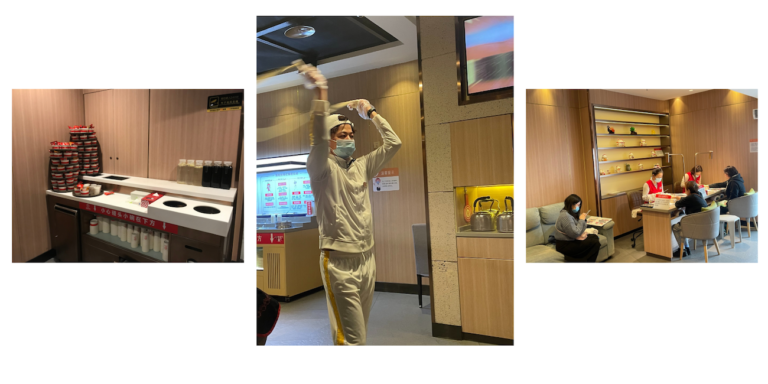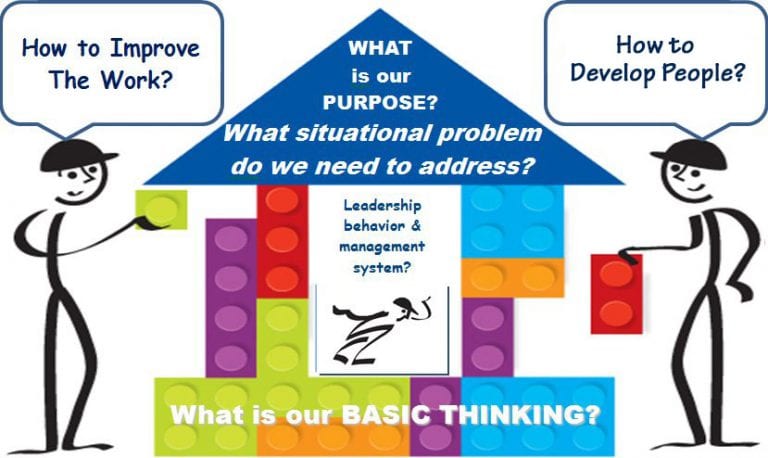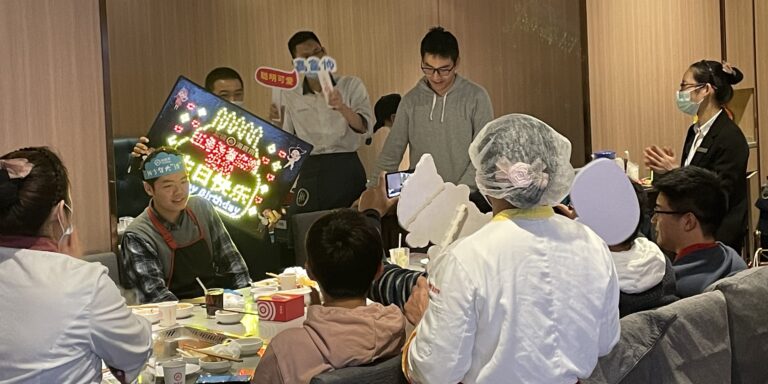Haidilao has been the most popular hotpot restaurant chain in China for many years now. Famous for its Sichuan-style broth and its top-notch customer service, the company runs more than 900 restaurants – most of them in China but with branches throughout Asia as well as in Canada, Australia, the US and the UK.
HDL, short for Haidilao, has a very high revenue per square meter and some of the highest profits in the industry. It employs more than 100,000 people and when it was IPO’d in Hong Kong at the end of 2019 it was valued at $30 billion. Clearly, people like what Haidilao has to offer! The self-cooking concept (a pot is filled with broth and guests can order different ingredients they will then cook in it, from meat to noodles and vegetables) creates a relaxed, familiar atmosphere that has made the chain a favorite for family and business gatherings.
My fascination with this restaurant chain began in 2007. At the time, I was working at the YUM! Brands headquarters in Shanghai (this is the company that owns Kentucky Fried Chicken and Pizza Hut, among others) as a National Training Manager.
My colleagues and I used to go to the first Haidilao restaurant in Shanghai not only to eat, but also to observe the service – potential for some training materials we were developing. Back then, our training courses mostly used cases from foreign countries – like the Seattle’s Pike Place Fish Market or Starbucks. We wanted to discover local beat practices and add Chinese cases to the mix.
During a staff meeting, one of my colleagues, Ms Fang, told us how, one night, on her way to a HDL restaurant she ripped her down jacket. When the waitress welcomed her and grabbed a coat cover to protect her jacket while it hung to the back of the chair (a common practice in Chinese restaurants), she noticed the rip and mentioned that one of the other waitresses was very good at mending clothes. Ms Fang accepted the help and, sure enough, before she finished dinner, the jacket was returned to her fully mended. As far as customer service goes, this was far beyond our expectations and, from then on, our team chose HDL for many of its gatherings.
What happened to Ms Fang wasn’t an isolated event. You don’t become one of China’s most popular restaurants without consistently delighting customers. In this sense, reading online reviews is very informative: Haidilao staff has been known to fetch rubbing oil for a limping customer, mend another’s ripped jacket, offer a snack to a party when they found the restaurant that they wanted to eat at was closed, and even drive to the station a guest who struggled to find a taxi.
The customer experience is everything for Haidilao. It’s a big differentiator for them, something that sets them apart from many other restaurant chains. HDL even offers complimentary services to customers waiting to be seated, including manicure for ladies, shoe-shining, the opportunity to make paper cranes for charity (each crane means half a RMB off the dinner bill), show cooking, and free tea and snacks.
HOW CAN HDL BE SO SUCCESSFUL?
Let’s look at the five dimensions of the Lean Transformation Framework to try and answer this question.
- What is the company’s purpose?
As a native Sichuanese, I don’t necessarily think HDL’s hot pot is the best I have tasted, but I trust their service and I know that my guests and I will always have a good time there. That’s why, when I host family gatherings like birthday parties, HDL is always my first choice. I remember organizing a birthday dinner for my mother at a HDL restaurant in ChengDu one year, and the experience was great. The staff had taken care of everything (except for the cake) and surprised my mother with a peach-shaped bread (a symbol of longevity in China), singing and a special neon birthday card. Everyone had a great time!
So important is customer satisfaction for Haidilao that everything that does not directly impact it tends to be seen as secondary. The way they select the locations for their sites is a good example that illustrates the point. The site selection team knows the reasons customers choose to eat at HDL and know they don’t necessarily care about the restaurant location within a mall. These prime spots always cost more in rent. Being able to avoid them, coupled with the fact that the Hadilao brand name attracts a large number of visitors and that each HDL restaurant needs to rent out a large space, gives the company an edge when negotiating leasing terms. Indeed, Haidilao is at a considerable advantage here, with an average leasing cost about 4% of restaurant revenues compared with the average 10- 20%.
- How do they improve the process?
Knowing what the customer wants requires observation at the gemba – a practice that even senior leaders are encouraged to participate in – and an environment in which employees are encouraged to highlight problems and share possible solutions. One such solution, brought forward by a front-line employee, was to install a metal stand next to hot pot to which the ladles and spoons used by customers to cook their food could be hanged. Eating from a hot pot can be a messy business and with no place to put down these tools the table quickly turns into a mess. The solution, pictured below, keeps the table tidy and improves the customer experience.
- How do they develop staff capabilities?
I analyzed Haidilao’s 2019 financial statement and discovered the labor represents 30% of the company’s costs, compared to an average of around 20% for its competitors. This indicates HDL is willing to give a higher share of revenue to employees through salary, benefits, and opportunities.
Their unique hiring strategy favors employees coming from rural areas who are interested in working and learning. Some may think this is a way of keeping labor costs low but, in reality, HDL pays a higher base salary than many white-collar office workers get. Why? Because they want to retain staff and want a trustful, diligent, hard-working and stable workforce. The company tends to promote inside people rather than recruit for high-level positions: even its COO, Ms Yang, started her career in HDL as a waitress.
HDL’s people strategy is centered around:
- A mentor-mentee system where new employees are assigned to a mentor store manager, with the mentee’s performance directly related with manager’s ability to progress in her career. For instance, when a mentor is able to develop four store managers then he or she will be promoted to an area manager position.
- Daily, weekly, and monthly monitoring of each restaurant’s performance and frequent reflection of the current state to always know what gap needs to be filled to reach the target condition.
- Employee self-study and -development and the provision of financial support for those who want to pursue a higher-education degree.
- What is their approach to leadership and management?
The approach HDL adopts here is based on the idea of empowering front-line employees and developing their leadership skills through problem solving, all with the goal of enhancing customer satisfaction. According to the Haidilao training manual, a front-line waiter or waitress is authorized to round down to 0 the final figure from the bill, exchange dishes if customer is not satisfied, give free gifts or dishes on special occasions, offer discounts to customers as appreciation, waive certain charges, even order dishes or goods from the outside that customers wish to have. The trust the company places in its employees boosts their confidence and capability.
- What is the culture that underlies their transformation?
As we have seen, trust is the heart of the value system that informs Haidilao’s every action, as is respect for people – be it a customer or an employee. What’s more respectful to staff than trusting them indiscriminately to handle customers throughout their journey within a HDL restaurant? And what’s more respectful to guests than doing everything in our power to provide them with the best possible experience?
This unique corporate culture proved to be of great help to the company during crises, too. When, in August 2017, an undercover investigation revealed that one of the company’s outlets in Beijing was suffering a rats infestation, the company was quick to admit its mistake and publish an action plan to solve the situation. The honesty it displayed and the transparency it promised the public were greatly appreciated by HDL’s customers.
***
No company is perfect, and I certainly see some challenges for Haidilao. For example, attentive service is great until it becomes overkill – there is no need to have a person hand out paper towels in the restrooms, especially during a pandemic. Another potentially problematic situation for the company is the fact that it doesn’t have any franchises. With the average customer spending RMB 150 ($23) per meal per person, increasing operating costs could put HDL’s revenue growth in jeopardy. Haidilao has begun to diversify its business models (I recently noticed a new HDL fast-food shop has come to the market that serves noodles for $3. A good start!
Despite these challenges (what company doesn’t have any?), there is no doubt that Haidilao is an incredibly successful and inspirational business. What I hope you have gotten from this article is an understanding of the fact that its success is no miracle, no coincidence. It’s a result of its customer-first attitude and lean way of thinking.

